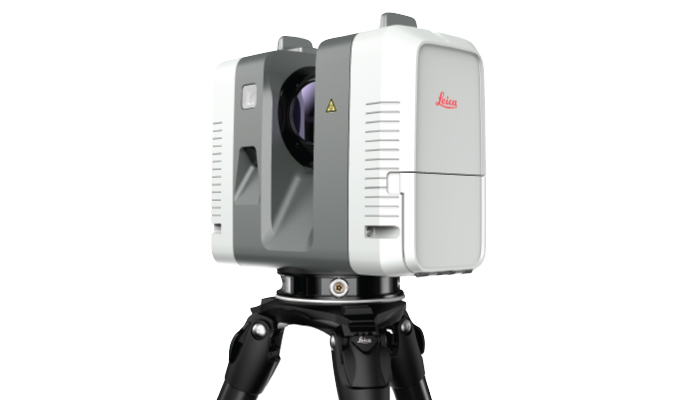By Troy Dahlin
Alloy Mechanical, a mechanical contractor based in Lansing, Illinois, prides themselves on being a single-source industrial contractor for all their client’s design-build and mechanical needs. Following the core beliefs of safety, problem-solving, leadership, teamwork, performance, quality, and integrity, the Alloy team strives to be proactive and productive in both the internal work environment and client service.
With a reputation for delivering complex projects on time and budget, Alloy’s design-build solutions offer clients diverse expertise and the simplicity of dealing with a single point of contact. When Brian Kidder, business development manager with Alloy Mechanical, began vocalizing his frustration with various aspects of their current laser scanner, operations manager Scott Twiddy knew it was time for a change.
“Our goal has always been to grow our capabilities in such a way that we can be of increasing help to both our existing clients and new clients,” says Twiddy. “The 3D laser scanner we were using brought frustration, required targets for registration, and was impeding our ability to complete the job properly; if we are to continue to be more efficient both internally and for our clients, we needed scanning technology that could get the job done.”
SCAN CHALLENGE
To gain more presence in assisting clients with their scanning and modeling needs, the technology tool’s weak spot had to be eradicated and fixed permanently. In addition to general scanning needs, the issue of stainless steel moved to the forefront: buried within petrochemical terminals frequently scanned by Alloy are stainless steel panel boxes that must be accounted for, measured, and noted. In more than one instance, their previous scanners did not accurately pick up the geometry of those stainless boxes, resulting in a negatively affected install and outcome. Overall, about 90% of the structures scanned by Alloy contain stainless steel cabinets and complex pipelines, so this element of the challenge moved the process of finding new technology to the forefront.
U.S. CAD STEPS IN
After seeing a video on LinkedIn posted by U.S. CAD’s reality capture expert, Ted Moberg, Twiddy’s interest was piqued, and he reached out. U.S CAD is a leader in AEC technology solutions providing consulting, training and education, and BIM production services, helping guide clients through technology decisions and adoption.
“U.S. CAD has been phenomenal in understanding what Alloy needs,” comments Twiddy. “They worked with us to establish a complete solution to meet our goals; I like to say they didn’t come in to change our workflow; they came in to enhance it.”
After gaining a thorough understanding of Alloy Mechanical’s current and future needs, U.S. CAD recommended the Leica RTC360, as it provides the most bang for the buck in the exact way that Alloy needed it to perform.
LEICA GEOSYSTEMS RTC360
The Leica RTC360 3D reality capture solution empowers users to document and capture their environments in 3D, improving efficiency and productivity in the field and the office through fast, simple-to-use, accurate, and portable hardware and software.
SWITCHING FOR SUCCESS
Alloy Mechanical switched from their former brand to Leica in the spring of 2021 and immediately noticed improved results.
“The resolution and accuracy, especially with density, is far better,” reports Kidder. “We don’t need targets to get registration anymore, which is a huge factor in our success. The reduced scan time is significant, allowing us to be instantly more efficient internally and for our clients.”
What was once an entire day of scanning for a particular client was accomplished in 2.5 hours with the RTC360. As a result of the time saved, the Alloy client asked, on the spot, for additional areas to be scanned. When that was accomplished in record time, the client returned to Alloy again with more jobs.
Two other bid walks with clients to create estimates resulted in the same increased level of success: Kidder asked if he could scan the project simultaneously with their walk; the client agreed. Because the RTC360 was so fast and effective, Kidder shared the entire point cloud of the site, allowing their estimate to be even more accurate and complete.
The Alloy team is planning to integrate scanning into their bid walks for future clients (where allowed) for an instant boost in productivity and results. “This will position us way ahead of the competition in what we can offer and accomplish,” says Kidder.
EASE OF USE
“Using the RTC360 is incredibly easy,” says Kidder. “I was playing with it when we first got it and was able to have it up and running pre-training.”
Kidder admits to purposefully trying to make the unit not work to help him understand how to fix it if needed, but he was unsuccessful: “I couldn’t make it not work! The simplicity was really neat to see. Even when you think you made a mistake, you didn’t!”
Kidder also appreciates the ease of the backpack format: with everything in one place, he’s out the door in record time. Since he works all over the country, the efficient transportation of the RTC360 translates to not having to check it into the baggage compartment on planes (and worry about it being damaged), and he can now accomplish day trips with increasing ease.
Of special note: The Leica RTC360 hasn’t missed scanning one stainless steel unit to date.
FUTURE IS BRIGHT
Twiddy recognizes the deeper benefits of making the switch to Leica: “When modeling facilities and creating red lines, with the time it takes to scan, we can create a model that’s accurate to within 1/16 of an inch. This allows us to better service our clients; the combination of scanning during bid walks is game-changing. This tool is going to make us a better company.”
About the Author:
Troy Dahlin is vice president, heavy construction segment, US/CAN of Leica Geosystems, part of Hexagon. For more, visit www.leica-geosystems.com.
Modern Contractor Solutions, December 2021
Did you enjoy this article?
Subscribe to the FREE Digital Edition of Modern Contractor Solutions magazine.



